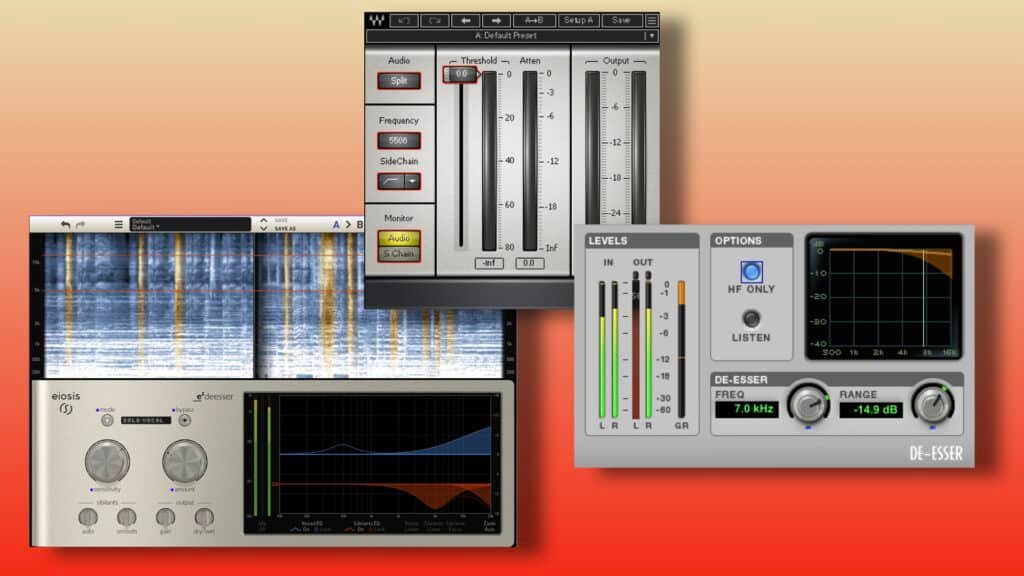If you are starting to dabble in the field of vocal mixing, or even at a relatively advanced level, you have probably already heard of a tool called the “de-esser”. And the reason why so many people talk about it in the audio world, and especially in the vocal mixing world, is because it is an essential tool for a good mix. But what is it exactly? Answer here!

A de-esser is a tool (usually in the form of a plugin) that, above a certain threshold and in a given frequency band, reduces the sibilant sounds (“t”, “s”, “f”, “ch”) of an audio source, which is usually a human voice. It allows the user to avoid level and energy jumps as soon as a sibilant sound is produced.
Classic Parameters
The classic parameters of a de-esser are… :
- Frequency : This parameter determines the frequency at which the de-esser will decrease the level of the audio signal.
- Range : This determines how much the de-esser will reduce the signal level. The higher the range, the more the signal will be reduced.
- Threshold : Audio level above which the signal will be reduced
Most of the plugins available on the market allow you to choose whether the de-esser will decrease the whole audio signal or only the frequencies above the target.
It might seem more logical to reduce only the frequencies in the sibilant range, but in some situations it is better to act on the entire frequency range. This would be the case, for example, if the singer has recorded very close to the microphone and the sibilance produces low frequencies.
Did you know that? Slate Digital recently released a new plugin, FG-DS 902. I give you a full review here: Slate Digital FG-DS 902 : In-Depth Analysis And Review
Applications
As you will have understood, a de-esser is a tool created to keep control over the more energetic frequencies of vocals. Without this tool, it becomes complicated to enjoy the beautiful sounds that some vocals can offer in this frequency range.
But it is also very common to use it on…
- Guitars, to make them softer and less aggressive
- Cymbals. In some rare cases, a de-esser allows you to get rid of the trebly sound cymbals can produce.
In fact, anything that seems too aggressive in the frequency range between 6 kHz and 10 kHz can be de-essed.
But before de-essing everything, my best advice would be to first master at least one de-esser plugin. This will help you to get the sound results you are trying to achieve faster. Then, you can diversify the plugins and the uses.
The big difficulty in learning how to use a de-esser is that, depending on the plugins, the parameters vary enormously. Unlike, for example, a compressor, manufacturers use many different terms to talk about the same parameter, which can be quite disconcerting for a good learning process.
To learn faster, try to focus on what you hear, not what you see. Push the knobs to the extreme and listen to the sound result. This is the best way to learn.
De-essing vocals is a key step for a good vocal chain. But how to build a good chain? I tell you all about it right here: Crafting A Pop Vocal Chain: The Pro Guide
My favorite De-Esser
My favorite de-esser plugin, for vocal mixing, is DeEsser from Waves. Because… :
- It is extremely easy to use
- It has everything you need to work in details
- The sound quality is very good

If you have any questions about de-essing or anything in the field of vocal mixing, please contact me! I’m always happy to help!
Related Articles:






